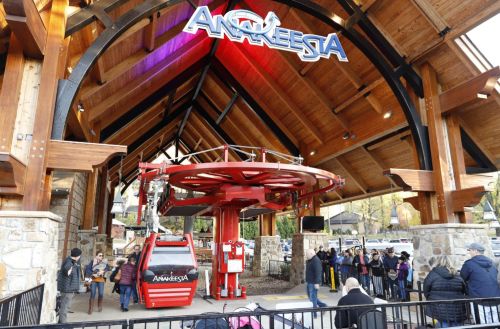

Have you ever noticed that family trips have a way of turning into logistical marathons before you even leave the driveway? One minute you’re excited about a relaxing getaway, and the next you’re knee-deep in mismatched socks, forgotten chargers, and endless snack negotiations. Traveling with family is rewarding, but it’s also a high-stakes game of planning, patience, and problem-solving. And in today’s world—where delays, sold-out attractions, and viral travel hacks are part of the landscape—it takes more than tossing clothes into a suitcase to make things run smoothly. If you’re headed to a popular vacation destination like Gatlinburg, where the Smoky Mountains meet bustling streets filled with attractions, you know the stakes are even higher.
In this blog, we will share how to plan, pack, and prepare for a family trip in a way that keeps everyone happy, avoids unnecessary chaos, and leaves room for those spontaneous moments that make travel worth it.
Building a Flexible Plan Everyone Can Live With
The modern family trip is a mix of tradition and adaptation. You need a plan, but you also need the space to adjust when the weather shifts or the kids suddenly become fascinated by a street performer. A good approach is to create a travel “skeleton” rather than a minute-by-minute itinerary. This means blocking out key activities and meals while leaving open pockets of time for exploration or rest.
To make those activity choices, it’s worth the effort to look up things to do Smoky Mountains Gatlinburg and find out which ones fit your family’s interests and energy levels. You might discover popular attractions like Ripley’s Aquarium of the Smokies, Anakeesta, or Gatlinburg SkyPark that are worth building your day around.
Staying somewhere convenient can make this flexibility easier, and The Greystone Lodge on the River is a smart pick. Its central location means you can step out for fun and return quickly if someone needs a nap or a snack break.
When planning, consider grouping activities by location to cut down on travel time between stops. If you’re spending the morning at an attraction near your hotel, schedule a lunch spot within walking distance. This prevents the dreaded “hangry” meltdown while keeping the day moving at a comfortable pace.
Packing Like a Strategist, Not a Tourist
Overpacking might feel like a safety net, but it often becomes the source of frustration. The trick is to pack items that pull double duty. Think jackets that work for both warmth and light rain, or shoes that can handle a short hike and a casual dinner. This approach not only saves space but also makes it easier to keep track of everyone’s belongings.
For families, a shared packing list is essential. A digital checklist in a shared app can help everyone see what’s been handled and what’s still missing. Kids can even have their own section to manage, giving them a sense of responsibility. If they forget something, it becomes a learning moment instead of a parental failure. This approach not only eases the burden on parents but also sets the stage for a smoother vacation experience. With everyone packed and prepared, you’ll be free to dive into the fun—like biking the scenic trails or exploring the beaches and family-friendly activities in Hilton Head.
Consider packing “day kits” for each person—small bags with snacks, water, a phone charger, and a change of clothes. This way, if luggage gets delayed or you find yourself unexpectedly out for longer than planned, everyone has what they need without digging through a giant suitcase in public.
Keeping the Peace on the Road or in the Air
Travel stress often starts during the journey itself. Long car rides and layovers can test patience faster than any museum line. A little preparation here can go a long way. Download offline entertainment for devices in advance, pack headphones, and have a small stash of surprises for younger travelers—like new coloring books or puzzles—that you reveal when boredom hits hard.
If you’re flying, book seats together early to avoid last-minute scrambles at the gate. For road trips, plan short breaks every couple of hours, not just for bathroom needs but for stretching legs and resetting moods. A quick roadside picnic or a scenic viewpoint can turn a tedious drive into a memorable part of the trip.
Snacks are the unsung heroes of family travel. A mix of healthy options and treats keeps energy steady and moods lifted. You can even make snack selection part of the pre-trip excitement by letting each family member choose a few favorites.
Managing Expectations and Energy Levels
One of the biggest reasons family trips go sideways is mismatched expectations. Parents imagine a harmonious, Instagram-ready adventure. Kids may just want pool time and ice cream. The solution is to have open conversations about priorities before you go. Let each person pick one must-do activity, and make sure those get scheduled in.
Energy management is just as important. Packing too much into a single day is a recipe for crankiness. Balance high-energy activities with slower-paced ones. For example, a morning hike could be followed by an afternoon spent browsing local shops or relaxing in the hotel’s lounge.
Sleep schedules matter, too. If your family isn’t used to early mornings, booking an 8 a.m. tour might backfire. Similarly, if you have night owls in the group, late evening attractions can be a hit. The goal is to keep the group’s natural rhythms in mind so that no one feels constantly out of sync.
Letting Go of Perfect
Here’s the truth: something will go wrong. A reservation will get lost. A ride will be closed. Someone will spill juice on their only clean shirt. The sooner you accept this, the easier it is to enjoy the trip. In fact, those moments often become the funniest stories later.
A flexible mindset can turn a setback into a new adventure. If an outdoor activity gets rained out, maybe you discover a hidden gem of a local café instead. If traffic delays you, it might lead to a sunset you wouldn’t have seen otherwise.
Perfection is overrated in family travel. Connection and shared experience are what matter most. The best trips are remembered for the laughs, surprises, and even the little detours.
In the end, preparing for a family trip is less about controlling every detail and more about creating the conditions for good memories to happen. By blending thoughtful planning with room for spontaneity, you give your family the best chance to enjoy the journey together. And when everyone’s fed, rested, and smiling—at least most of the time—you’ll know you did it right.


